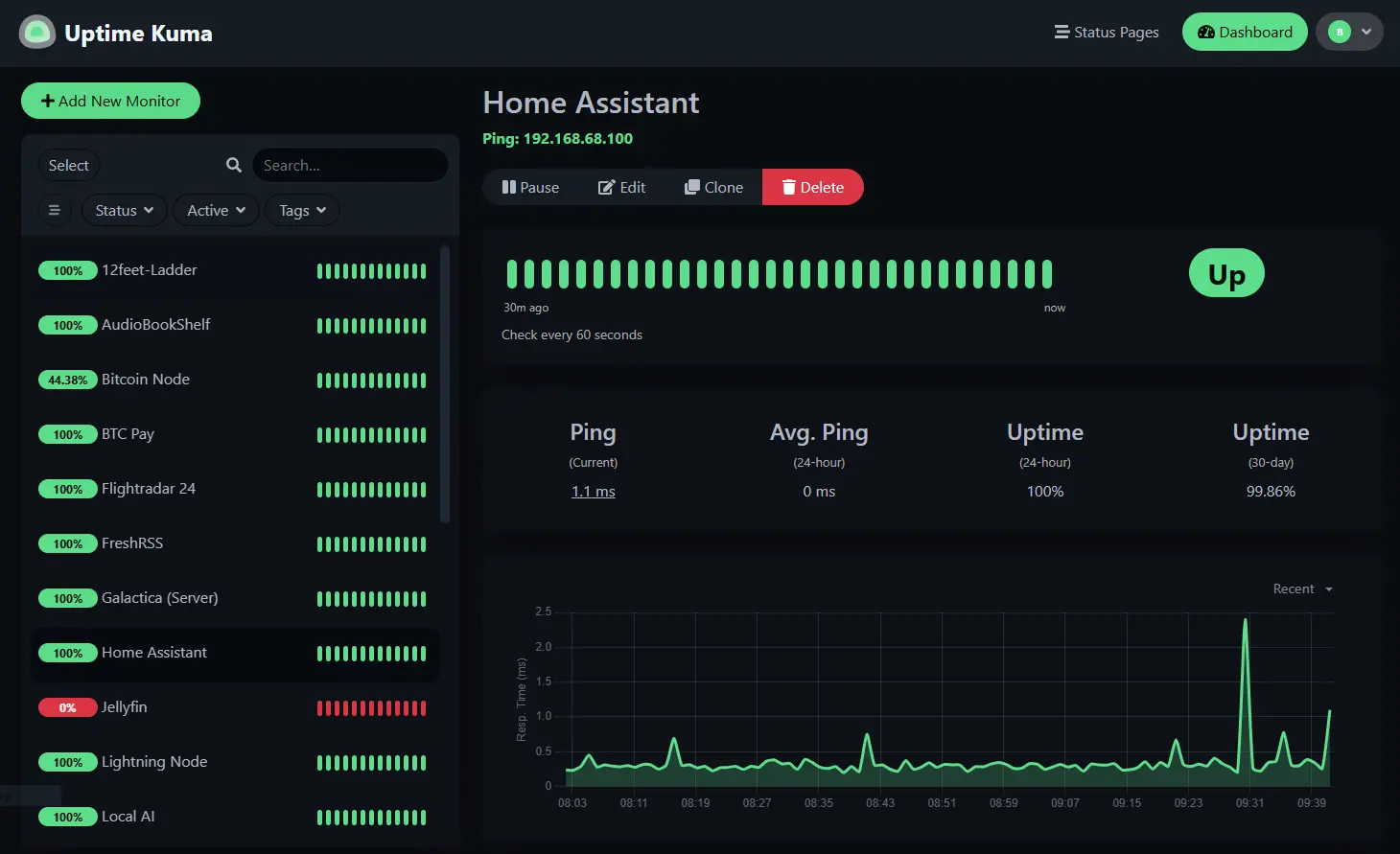Install Uptime-Kuma on a Synology NAS with Docker
In today’s always-on world, ensuring your websites and services are up and running is critical. That’s where Uptime Kuma, a sleek, modern, and fully self-hosted monitoring tool, comes in. Designed to be an open-source alternative to services like UptimeRobot, Uptime Kuma offers robust uptime monitoring features while giving you full control over your data.
With its intuitive interface, support for multiple monitoring types (HTTP(s), TCP, Ping, and more), and real-time notifications, Uptime Kuma makes service monitoring effortless. Whether you’re running a personal project or managing a fleet of websites, this tool is highly customizable to meet your needs.
I personally use Uptime Kuma to power the status page here on ByteTrek, giving my visitors real-time visibility into the availability of my services.
In this post, we’ll walk through what makes Uptime Kuma a standout solution, its key features, and how you can easily deploy it using Docker or Docker Compose for your own setup.
You can find the Official site here.
Screenshots/Demo 🖥️
Here are a few screenshots to give you a better sense of how it looks.
Create Share Folder
-
Log in to your Synology NAS
Access your Synology NAS using your web browser and enter the login credentials. -
Open the Main Menu
In the top-left corner, click on the Main Menu (the icon with squares). -
Navigate to File Station
In the Main Menu, locate and click on File Station to open the file management tool. -
Go to the Docker Folder
In the left sidebar of File Station, find your Docker folder or navigate to the location where you store Docker-related files (you may need to create one if it doesn’t exist). -
Create a New Folder
At the top of File Station, click on Create.
Select Create Folder from the dropdown menu.
Name the folderuptime-kuma. Press OK to create the folder.
Now, you have a Uptime-kuma folder in the Docker directory, where you can store configuration files or other relevant data for your setup.
Setting up Task Scheduler
- Log in to your Synology NAS.
- Navigate to the Main Menu and open the Control Panel.
- Scroll down and locate Task Scheduler, then click to open it.
-
In the top menu bar, click Create, select Scheduled Task, and choose User-defined Script.
- In the window that appears:
- Enter a task name. This can be anything, such as the name of the app you’re installing. It doesn’t need to be specific. Uptime-kuma will be fine.
- For User, select root from the dropdown menu.
- Click on the Schedule tab at the top:
- Select Run on the following date and leave the Start time and Repeat options at their default values.
- Next, click the Task Settings tab:
- Ignore the Notification section.
- Under Run command, paste your
docker runcommand. Double-check to ensure all file paths and parameters are correct.
Docker Run Code
1
2
3
4
5
6
docker run -d \
--name=uptime-kuma \
-p 3001:3001 \
-v /volume1/docker/uptime-kuma:/app/data \
--restart=always \
louislam/uptime-kuma:1
Please double-check your
paths. You can also change the port number if required. Remember to visit the official guide as there may be extra features you can enable. Official Guide
- Click OK to save the task. You’ll be prompted to enter your Synology NAS password—enter it and press Submit.
- Back in the List of tasks, locate the task you just created.
- Select the task, then click Run from the top menu. When prompted to confirm, click OK.
Your task will now execute, setting up your Docker container. This process may take several minutes. You can now open your container by visiting:
yournasipaddress:3001. Uptime-kuma should now be up and running!
Docker Compose Code
If you’re comfortable with Docker Compose, you can use the following configuration to set up the installation for Uptime-kuma.
1
2
3
4
5
6
7
8
9
10
11
version: "3.8"
services:
uptime-kuma:
image: louislam/uptime-kuma:1
container_name: uptime-kuma
ports:
- "3001:3001"
volumes:
- /volume1/docker/uptime-kuma:/app/data
restart: always
1
docker-compose up -d
Thanks for reading! 🎉🤘🎶
Stay curious! Browse our content and dive deeper into amazing topics. 🧠💻🌍
If you enjoy the site, feel free to tip me.

